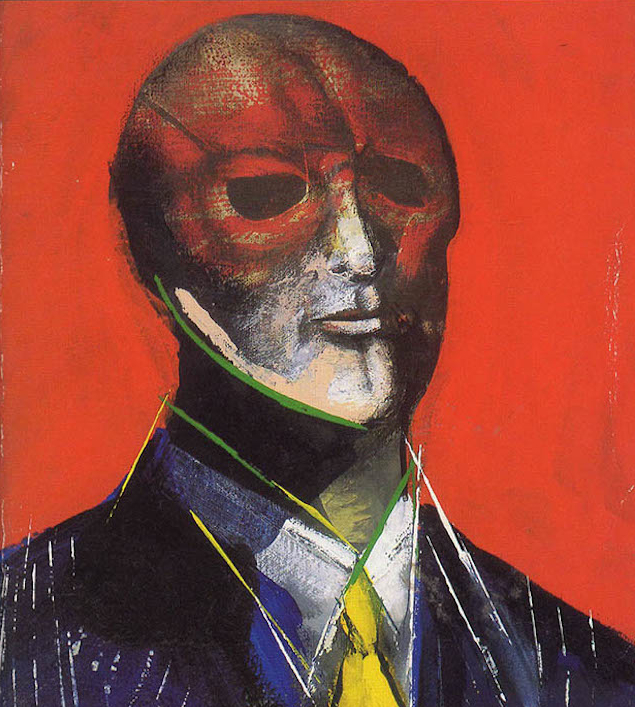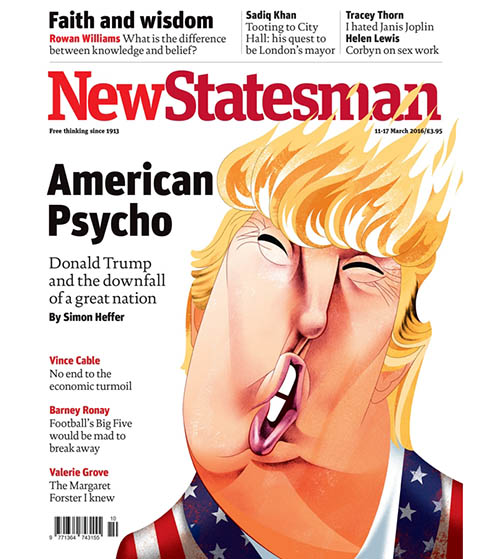
In Hindsight, An American Psycho Looks A Lot Like Us
Written By Dwight Garner
Read The Original New York Times Article
When Bret Easton Ellis's "American Psycho" was about to be published in 1991, word of its portrait of a monster — an amoral young Wall Street serial killer named Patrick Bateman, who nail-gunned women to the floor before doing vastly worse to them — was met with outrage.
There were death threats. A book tour was scuttled. The Los Angeles chapter of the National Organization for Women proposed a boycott of the novel’s publisher. An advance review of “American Psycho” in The New York Times Book Review was titled "Snuff This Book"Some stores refused to stock the novel.
I didn’t read “American Psycho” at the time. I was two years out of college in 1991, and while I’d eagerly ingested the stylish mid-80s debuts of the so-called “brat pack” writers, of which Mr. Ellis’s novel "Less Than Zero"(1985) is a crucial artifact, I’d moved on.
Yet it disturbed me that, in the moral panic over “American Psycho,” so many smart people made a rookie mistake: They’d confused author with character. Bret Easton Ellisand Patrick Bateman were pariahs.
Flash forward 25 years, to 2016. Lo, how things have changed. Over the past decade or so, Bateman has become a pop something, a grinning, blood-flecked national gargoyle. A brash new musical based on “American Psycho” is set to open on Broadway. You can purchase Batemen action figures. Bateman memes — photographs and GIFs from the director Mary Harron’s excellent 2000 film versionof “American Psycho” — splash across every corner of the web. (“I have to return some videotapes” is among the movie’s indelible lines.)
Each Halloween, there’s at least one Bateman at the party, some fellow with a gleaming ax and a raincoat, his hair slicked tightly back in that cretinous late-80s style still favored by Donald Trump’s sons.
How to fathom the second coming of Patrick Bateman? The cult following and gradual critical embrace of Ms. Harron’s film, which starred Christian Bale, has played the primary role. Ms. Harron recognized the coal-black satire in Mr. Ellis’s novel and teased it to the surface. In her “American Psycho,” dire comedy mixes with Grand Guignol. There’s demented opera in some of its scenes. The film, like a painful zit on one’s lower lip, pops.
That Mr. Ellis’s novel, alleged by some to be among the most misogynistic books in American lit, was coaxed to cinematic life by a woman adds Möbius-strip layers of cultural complexity. Film and gender scholars will be off in the corner, continuing to untangle the knots, for at least a generation.
With time, the book itself has picked up a good deal of grudging respect, too. It’s seen as a transgressive bag of broken glass that can be talked about alongside plasma-soaked trips like Anthony Burgess’s “A Clockwork Orange” (1962) and Cormac McCarthy’s "Blood Meridian"(1985), even if relatively few suggest Mr. Ellis is in those novelists’ league.
I read “American Psycho” for the first time recently, and this is certain: This novel was ahead of its time.
The culture has shifted to make room for Bateman. We’ve developed a taste for barbaric libertines with twinkling eyes and some zing in their tortured souls. Tony Soprano, Walter White from “Breaking Bad,” Hannibal Lecter (who predates “American Psycho”) — here are the most significant pop culture characters of the past 30 years. Along with Bateman, they comprise a Mount Rushmore lineup of the higher antihero naughtiness. (Lisbeth Salander in “The Girl With the Dragon Tattoo” is among the too-rare rejoinders to a world in which men can brutalize women without regard.) Thanks to these characters, and to first-person shooter video games, we’ve learned to identify with the bearer of violence and not just cower before him or her.
Mr. Bale’s role in Bateman’s liftoff is impossible to underestimate. You can trace the character’s ascent along the arc of the actor’s career. (Bateman, Batman, Bale, baleful — there’s a malevolent linguistic richness in this subject matter.) He’s slowly become recognized as the dominant actor of his generation. This lends Ms. Harron’s film backward flowing gravitas.
Picking up “American Psycho” now, you can’t help but ask yourself: Do people get outraged by books anymore? Salman Rushdie’s “The Satanic Verses” aside — it was published three years before Mr. Ellis’s novel — it’s difficult to recall a recent novel that was so arduously condemned.
The battles over books like “Lady Chatterley’s Lover,” “Tropic of Cancer” and “Lolita” are far back in the rearview mirror. The complicated misogyny and Islamophobia that flow through the French writer Michel Houllebecq'snovels are greeted with a wink and a shrug.
Reading Mr. Ellis’s novel today, the hysteria of 1991 is almost inexplicable to me. It’s apparent from the start that Patrick Bateman is a sendup of a blank Wall Street generation. He’s a male mannequin, the ultimate soulless product of a soulless time, Warren Zevon’s “Excitable Boy” come to howling fruition.
The New York Times Book Review piece was written by Roger Rosenblatt. The novelist John Irving, also writing in the Book Review, correctly called Mr Rosenblatt's essay“prissy enough to please Jesse Helms.”
Bateman is a serial killer. He’s also an Exeter and Harvard grad, a gourmand, a tanning enthusiast and a ruthless fashion critic. A common literary-world rap against this novel was frustration with its endless litanies of what people wear. (Typical sentence: “McDermott is wearing a woven-linen suit with pleated trousers, a button-down cotton and linen shirt by Basile, a silk tie by Joseph Abboud and ostrich loafers from Susan Bennis Warren Edwards.”)
I found these litanies shrewd, a signal that Bateman is all about surfaces. They also feel like Mr. Ellis’s satire of writers who fill their pages with descriptions of trees and birds and insects. Clothes are Bateman’s pileated woodpeckers.
It’s impossible, in 2016, to talk about “American Psycho” without mentioning Bateman’s hero-worship of another well-tailored suit: Donald Trump. Bateman keeps a copy of Mr. Trump’s magnum opus, “The Art of the Deal,” on his desk. His dream is to be invited on the Trump yacht.
This is probably the place to point out that a recent issueof New Statesman, the British weekly, had a drawing of Mr. Trump on its cover with this headline: “American Psycho.”

Bateman asks his girlfriend, “Why wasn’t Donald Trump invited to your party?” She replies: “Oh god. Is that why you were acting like such a buffoon? This obsession has got to end!” It provides a sense of this novel’s offbeat comedy to print Bateman’s response to this: “‘It was the Waldorf salad, Evelyn,’ I say, teeth clenched. ‘It was the Waldorf salad that was making me act like an ass!’” Who isn’t driven to the brink by a Waldorf salad?
This food talk is a reminder that “American Psycho” has yet to receive its full due as the most wicked and sustained mockery of the late-80s restaurant scene that we have in our literature. Bateman and his friends are forever sitting down to meals like eagle carpaccio and free-range squid and gazpacho with hunks of raw chicken in it.
The book’s consumption gets darker. By the end, Bateman attempts to turn a dead woman into meatloaf. Here we approach the grisly and infamous portions of “American Psycho.”
There are only a handful of torture scenes. This novel is not wall-to-wall mutilation; it’s wall-to-wall moral vacuity. Still, these scenes are brutal in their exactitude: There are power drills and chain saws and lips snipped off with nail clippers and vaginas cut out to store in gym lockers.
Mr. Ellis told The Paris Review he consulted an F.B.I. textbook about serial killers to come up with some of this stuff. I sometimes had to read between my fingers. Yet there’s also a comic book texture to the literal and figurative overkill.
Here again, Mr. Ellis was racing ahead of the culture. Something has happened since 1991 to our response to violence, especially when it is seasoned with a shake of wet or, especially, dry humor. Increasingly inured to the mess, we’ve learned to savor the wit.
The catharsis that horror can provide now travels on a second and more intellectualized rail. Whether this fact will save or sink us, morally, we do not yet know.
Shortly after the book’s publication, Mr. Ellis spoke words to The Times that he shouldn’t have had to speak: “I would think most Americans learn in junior high to differentiate between the writer and the character he is writing about. People seem to insist I’m a monster. But Bateman is the monster. I am not on the side of that creep.”
The writer Donald Barthelme once put this same idea more memorably: “Don’t confuse the monster on the page,” he advised, “with the monster here in front of you.”
“American Psycho” is, in its way, strangely moving. The novel is streaked with Bateman’s attempts to confess his crimes. He lusts for genuine contact. He tells one woman to go home because he thinks he might harm her. “I think,” he says, “I’m losing it.”
Writing in Town and Country, Mr. Ellis said recently that if he had composed the novel in the past decade, Bateman might be “palling around with [Mark] Zuckerberg and dining at the French Laundry, or lunching with Reed Hastings at Manresa in Los Gatos, wearing a Yeezy hoodie and teasing girls on Tinder.”
Swipe left, young ladies.
Alive today, Bateman would also probably stand at the back of a Trump rally and — if he could find a designer version — pull on a red cap that reads: “Make America Great Again.”


